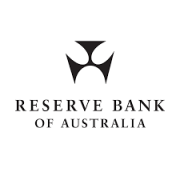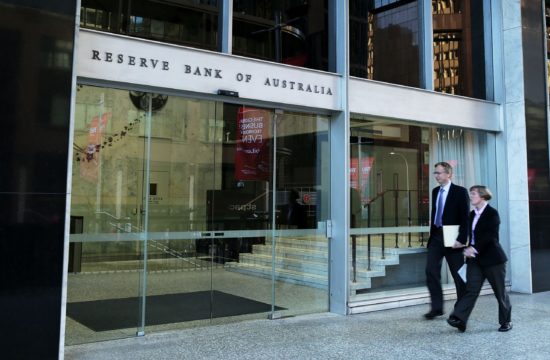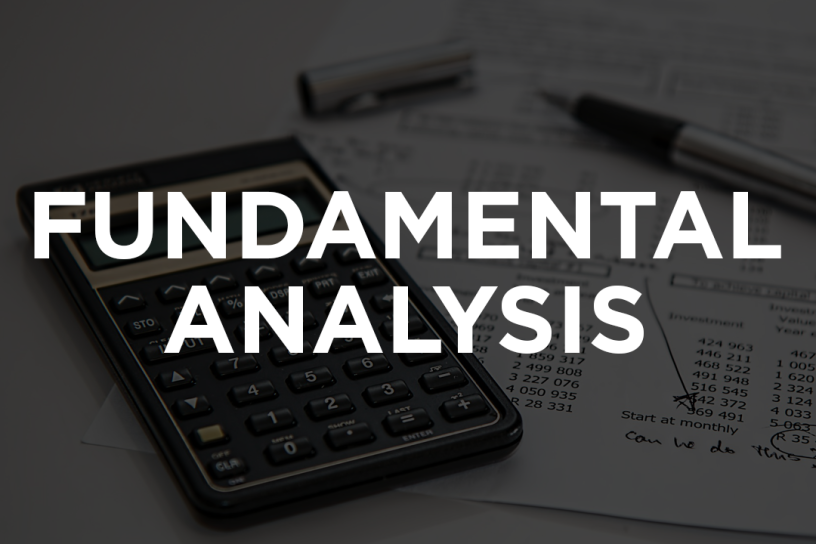Members Present
Philip Lowe (Governor and Chair), Guy Debelle (Deputy Governor), Mark Barnaba AM (by video), Wendy Craik AM (by video), Ian Harper (by video), Steven Kennedy PSM, Allan Moss AO, Carol Schwartz AO (by video), Catherine Tanna (by video)
Others Present
Luci Ellis (Assistant Governor, Economic), Christopher Kent (Assistant Governor, Financial Markets)
Anthony Dickman (Secretary), Ellis Connolly (Deputy Secretary), Bradley Jones (Head, International Department), David Jacobs (Deputy Head, International Markets and Relations, International Department)
Recent Developments
In a special meeting convened to consider options for monetary policy responses to the economic effects of the novel coronavirus disease (COVID-19), members commenced their discussion with a review of recent developments. The outbreak was noted as first and foremost a public health issue. Many countries were shutting their borders and placing restrictions on businesses and individuals to slow the spread of COVID-19. This was causing very significant disruption to economies around the world.
Financial markets had been very volatile and there had been sharp falls in the prices of risky assets as market participants struggled to price the risks, given their unprecedented nature. Equity prices in the advanced economies, including in Australia, had fallen by around 30 per cent. The falls had been broadly based across sectors, although equity prices in the energy and tourism sectors had fallen particularly sharply. The equity prices of banks had also fallen significantly, although it was recognised that the capital and liquidity positions of banks had been strengthened over the prior decade.
Liquidity in credit and money markets was very poor and the market for corporate bond issuance was essentially closed to all but the very highest quality borrowers. Credit spreads in corporate bond markets had widened substantially, particularly for high-yield bonds, increasing funding costs for corporations. Members noted that any further widening in spreads would translate directly into higher borrowing costs, since government bond yields had very little further room to fall. Yields in money markets had also risen, although banks and highly rated non-financial corporations were still able to access these markets. The Australian banks had strong funding positions and did not need to source additional funding from bond markets in the near term.
Government bond markets had displayed signs of dysfunction, with many participants seeking to liquidate their portfolios. This had also affected traditionally safe and liquid markets, such as the US Treasury market. The increase in yields and volatility partly reflected the unwinding of highly leveraged positions, and the constrained ability of dealers to absorb additional bonds after having reached leverage and capital constraints. The dysfunction in the US Treasury market had spread widely, given its important role as a pricing benchmark for the global financial system.
In foreign exchange markets, large repatriation flows had supported the yen, and the US dollar had appreciated against most other currencies. Members observed that the Australian dollar had depreciated against the US dollar by around 10 per cent over the preceding month, to be at its lowest level since 2002. Among other advanced economies, the exchange rates of commodity exporters such as Norway, Canada and New Zealand had also depreciated notably. Capital flight had been evident across emerging markets, with exchange rates depreciating against the US dollar and sovereign bond yields moving sharply higher.
In response to these developments, a number of major central banks had made sizable interest rate reductions at unscheduled meetings. The Federal Reserve had cut its policy rate by 100 basis points after an earlier cut of 50 basis points. The Federal Reserve, the Bank of England and the Reserve Bank of New Zealand had each lowered policy rates to ¼ per cent, and interest rates were lower than this in Japan and Europe.
Central banks had expanded their standard open market operations to provide short-term liquidity to financial institutions, including by lengthening the terms on which liquidity is extended. To support Australian financial markets, the Bank had injected liquidity through its open market operations, increasing Exchange Settlement (ES) balances from around $2.5 billion to $14 billion. The Bank had also announced that it would be conducting daily operations at one- and three-month terms and regular repurchase operations on terms of six months or longer. In a number of jurisdictions, including in Australia, central banks had stated that they would purchase government bonds in secondary markets to support their smooth functioning.
Members noted that many central banks were introducing additional measures to support market functioning and promote the resumption of activity in corporate credit markets. The Federal Reserve had introduced a commercial paper funding facility to provide a backstop for the market. The Bank of England, acting as agent for the UK Treasury, had announced that it would purchase unlimited amounts of commercial paper issued by non-financial firms with an investment grade credit rating. The Bank of England and the European Central Bank had expanded funding schemes to encourage banks to lend to businesses. There had also been an easing of bank regulatory requirements in many countries.
The Federal Reserve, in conjunction with a number of other central banks, had also lowered the cost and extended the terms of foreign currency borrowing through foreign exchange swap lines. This was designed to alleviate the very high demand for US dollars from non-US entities that had issued debt in US dollars that needed to be refinanced.
Members discussed how these developments and the rapidly changing situation were affecting the outlook for economic activity. The immediate outlook for the Australian and global economies was highly uncertain, but members viewed it as very likely that most countries would experience a very sharp contraction in economic activity. Members considered the information available for the Chinese economy, which indicated that there had been a large contraction in economic activity in the March quarter. Some indicators, such as coal usage, suggested that economic activity in China was beginning to pick up, although it was too early to assess the extent to which activity would recover in the June quarter.
While it was not possible to provide an updated set of forecasts for the economy given the fluidity of the situation, it was likely that Australia would experience a very material contraction in economic activity, which would spread across the March and June quarters and potentially longer. The size of the fall in economic activity would depend on the extent of the social distancing requirements, and potential lockdowns, put in place to contain the virus. The composition of consumption was changing considerably, with spending at supermarkets and pharmacies increasing substantially, while spending on hospitality and other services was falling sharply. Many service industries were being severely disrupted, with significant spillovers across the economy. There were likely to be significant job losses over the months ahead, although the extent of this would depend on the capacity of businesses to retain employees during this period. At the same time, some industries were employing more workers, particularly those involved in the retail supply chain and delivering goods. In time, following containment of COVID-19, the economy is expected to recover, but the timing of this was uncertain.
Considerations for Monetary Policy
Following their review of recent developments in financial markets and the implications for economic activity, members turned to how monetary policy could most effectively support the Australian economy through the challenging period that lay ahead.
Members acknowledged that the primary response to the COVID-19 outbreak was to manage people’s health, but that other arms of policy, including monetary and fiscal policy, would play an important role in reducing the economic and financial disruption. Members noted the measures that the Bank had taken to support the Australian economy and operation of financial markets over the days preceding the meeting.
The Governor proposed a package of policy measures, which together would assist in supporting the Australian economy through the period ahead. The focus of the package was on ensuring that funding costs were low across the entire economy and that credit remained available to businesses and households. This would help build the necessary bridge to the economic recovery and support that recovery once the COVID-19 outbreak is contained.
The elements of the package were discussed in turn.
1. A further reduction in the cash rate target to 0.25 per cent.
The proposed cut in the cash rate to 0.25 per cent would bring the cumulative decline over the preceding year to 1¼ percentage points. Members noted that this would be a substantial easing of monetary policy, which, to date, had been boosting the cash flow of businesses and the household sector as a whole and also helping trade-exposed industries through the exchange rate channel. Members acknowledged that very low interest rates have uneven effects and negative consequences for some people – especially those relying on interest income – but the evidence was that lower interest rates were benefiting the community as a whole.
Members supported the proposal and agreed that the cash rate would not be increased from its lower level until progress is made towards full employment and there is confidence that inflation will be sustainably within the 2–3 per target cent range. Given this, it was considered likely that the cash rate would remain at a very low level for an extended period. Members also agreed that the cash rate was now at its effective lower bound. Members had no appetite for negative interest rates in Australia.
2. A target for the yield on 3-year Australian Government bonds of around 0.25 per cent.
Members considered a proposal to extend and complement the longstanding approach to target the cash rate, which forms the anchor point for the risk-free term structure, by also targeting a risk-free interest rate further out along the yield curve. The specific proposal was to target the rate at the three-year mark, given its importance as a benchmark rate in financial markets and its role in funding across much of the Australian economy. Such a target would also be consistent with the expectation that the cash rate would remain at a very low level for several years.
Members supported the intent of the proposal and agreed that it would make most sense, including from a communication perspective, to set the target at the same rate as the target for the cash rate, namely 25 basis points. They acknowledged that the target did not need to be achieved precisely every day. Members noted that some time might be needed before yields would fall to the target from their level over the weeks preceding the meeting – of around 45 basis points. Members discussed the importance of the Bank’s communication focusing on how this target would both support the economy in the immediate period and assist with a strong recovery once the COVID-19 outbreak has been contained.
Members noted that the yield target would be achieved by regular auctions in the secondary bond market, whereby the Bank would implement a program to purchase bonds of different maturities, given the high level of substitutability between bonds. The Bank would also be prepared to buy semi-government securities to achieve the target and help facilitate the smooth functioning of the bond market, and would work closely with the Australian Office of Financial Management (AOFM) and state government borrowing authorities. Members noted that, although the program of bond purchases would entail an increase in the size of the Bank’s balance sheet, the focus of the program would be on bond yields rather than the quantity and timing of bond purchases. The objective of this component of the proposed policy measures would be to add to the downward pressure on funding costs for financial institutions, households and businesses.
Members thought it likely that the target for three-year yields would be maintained until progress was made towards the Bank’s goals of full employment and the inflation target. Furthermore, they expressed the view that it would be appropriate to remove the yield target before the cash rate itself was raised.
3. A term funding facility for the banking system, with particular support for credit to small and medium-sized businesses.
The proposed scheme had two broad objectives. The first was to lower funding costs for the entire banking system to ensure a low cost of credit to households and businesses. This objective would complement the target for the three-year bond yield. The second objective was to provide an incentive for lenders to support credit to businesses, especially small and medium-sized businesses. Members agreed that this aspect would be vital as many small businesses would be likely to find retaining staff in the period ahead extremely challenging.
Under the proposed facility, the Bank would provide a three-year funding facility to authorised deposit-taking institutions (ADIs) at a fixed rate of 0.25 per cent, which was substantially below lenders’ current funding costs. ADIs would be able to obtain initial funding of up to 3 per cent of their existing outstanding credit until the end of September 2020, and would have access to additional funding if they increased lending to businesses, especially to small and medium-sized businesses, with these funds able to be drawn upon until the end of March 2021. This size of the proposed facility was at least $90 billion. Members endorsed the proposal that no additional allowance be available to finance growth in lending for housing.
Members expressed support for the proposed scheme and discussed some technical aspects. They noted that institutions accessing the scheme would need to provide eligible collateral to the Bank, with haircuts applying to provide appropriate risk mitigation. The interest rate that would apply would be fixed for the term of the funding, which was consistent with the Bank’s expectation that the cash rate was likely to stay at a very low level for some time. Members also agreed that including a penalty rate to counteract the risk of a reduction in lending could act as a disincentive for institutions to participate in the scheme. The Governor indicated that the first drawings under the facility would be possible no later than four weeks from the date of the meeting.
The Governor informed members that he understood that the Australian Prudential Regulation Authority (APRA) would support ADIs using the scheme. In addition, the Australian Government was in the process of developing a complementary program of support for the non-bank financial sector, small lenders and the securitisation market, which would be implemented by the AOFM. Members observed that such support would be important to assist non-bank financial institutions and small lenders to continue to provide credit to households and businesses.
4. Exchange settlement (ES) balances at the Reserve Bank to be remunerated at 10 basis points, rather than zero as would have been the case under the previous arrangements.
The Governor outlined the implications of the proposed policy measures for the cash market. The existing ‘corridor system’ means that the balances financial institutions hold with the Reserve Bank overnight earn an interest rate 25 basis points below the cash rate, and in the event that a financial institution needed to borrow from the Reserve Bank overnight, it would be charged 25 basis points above the cash rate. Should the cash rate be reduced to 25 basis points, the interest rate on ES balances would be zero. In view of the significant increase in the balances held in ES accounts resulting from the combined effect of the Bank’s enhanced liquidity operations, bond purchases and the term funding program, maintaining a zero interest rate on these balances would increase the costs to the banking system.
Members agreed that such an outcome would be undesirable in the current environment. They endorsed the proposal to alleviate this cost by increasing the rate of interest on settlement balances to 10 basis points. No change to the arrangements for the top of the corridor were proposed. Members noted that the increase in ES balances would be likely to change the way that the cash market operates. In particular, large increases in ES balances could result in the cash rate drifting below the target as transaction volumes in the cash market decline, as had occurred in other countries in similar circumstances.
In considering the overall package of measures that had been discussed, members acknowledged that the term funding scheme and the three-year bond yield target were both significant policy developments that would not have been under consideration in normal times. Nonetheless, members strongly supported the proposed policy response as a comprehensive package to complement the fiscal response announced by governments in Australia in the preceding week or so.
Members endorsed the continuation of close policy coordination that had been taking place among the Bank, the federal and state governments and government agencies. They expressed the view that, in the Bank’s communication, it would be important to emphasise that the Bank expected a recovery once the COVID-19 outbreak has been contained, and that the recovery would be supported by the low cost of funding across the economy.
The Decision
The Board agreed on a package of measures, comprising four elements, namely:
- a reduction in the cash rate to 0.25 per cent
- a target of 0.25 per cent for the yield on 3-year Australian government bonds
- a term funding facility to support credit to businesses, particularly small and medium-sized businesses
- an adjustment to the interest rate, to be 10 basis points, on ES balances held by financial institutions at the Bank.
The measures would be announced in a media release at 2.30 pm AEDT the following afternoon, 19 March, following processes to ensure coordination of related policy announcements by APRA and the AOFM. The Governor would provide further elaboration and take questions at a press conference to be held at the Bank at 4.00 pm AEDT on the same day.














